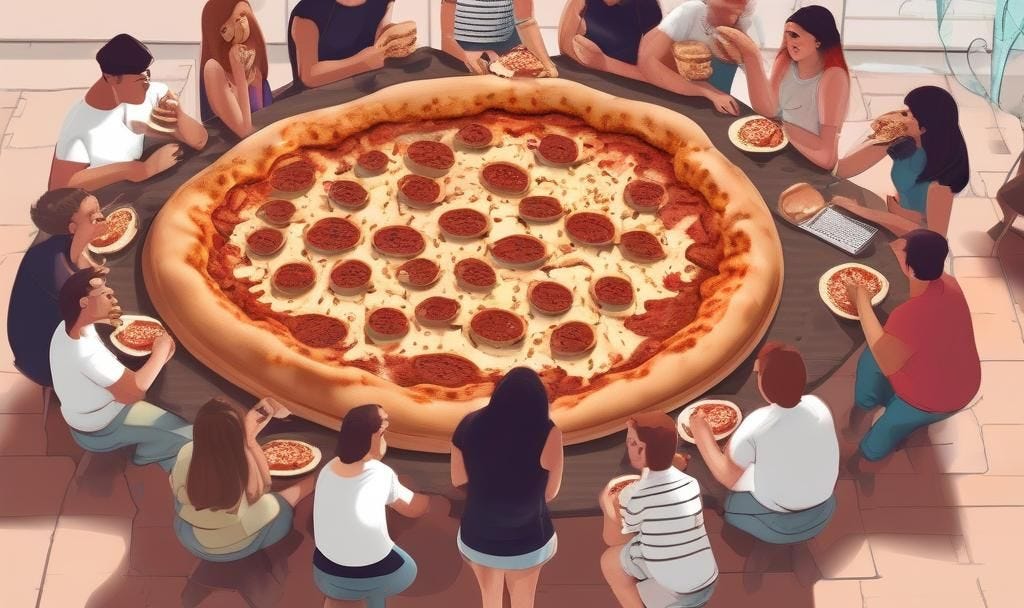Everybody Wants Their Slice
There are simply two main ways to go to market: Directly or Indirectly.
Direct - Hire, Train, Sell
We all know the Direct go to market motion: Hire great salespeople, train them on your product or service, give them a territory, account list or vertical and let them chase after the cheese. It’s a time-tested method of growing a business and it’s one that historically has worked and allowed companies to create uniformity and control in their offering to the market. In many direct sales motion you can have more brand control, more predictability and consistency.
At Metropolis we mostly go to market directly. We have an extremely talented sales and revenue engine that propagates our message and mission to the market. When you combine that with our sizable operations staff that is on the ground, in garages, talking to owners, managers and tenants every single day, we cast a very wide net of interest for our business. As I’ve gotten to know the business however, there’s a large and looming presence of the indirect model that I see as the silent backwater of the industry that we’ve also started to engage.
Indirect - Vet, Enable, Partner, Co-Sell
In an indirect sales motion, you are often forced to relinquish some control (and perhaps predictability) but you can make up for it in breadth of partnerships. The indirect sales motion is a force multiplier effect - one in which you proverbially ‘supply the weapons to the 3rd party army.’
Consultants, procurement departments, managed service providers and advisors need to eat too and no one works for free, especially those with captive audiences and a rolodex of friendlies. These actors need a slice of the pie to get them out of bed in the morning.
Coming from the EV charging world, I saw the channel as a very clean cut and structured path. You sell 100 widgets to the channel for $1 in a wholesale transaction and they in turn sell those 100 widgets to their customer base for $1.25 and make their 25% margin. Then in the reseller channel, you arm the resellers with your marketing collateral, they gain a commitment from a customer to a buy a widget for $1.25 and then they turn around and place an order from you for $1.10 while slapping their value-add service on top. It’s certainly not that simple but for illustrative purposes, we’ll go with it.
In the parking solutions space, the channel is quite different and I’d categorize it in two main buckets: 1. consultants/advisors and 2. managed services providers.
There’s a litany of consultants and advisors that have the ear of the local business owners, council members or board of local museum and they’ll happily bring your product or service to their relationships….but they want a slice of the deal. Altruistic introductions are reserved for the charities!
These consultant individuals are invaluable for the top of funnel and often take a deal about 10% of the way there (getting in the door with high credibility) but are crucial in the backchannel and influencing of the deal. These individuals may be on retainer or more likely they are partners in the profit generation of the ultimate deal structure. We often see retired or long-standing industry vets take this approach after they’ve made their industry and community connections and want an entrepreneurial off-ramp that works for their lifestyle.
Managed service providers on the other hand are a little bit more subtle about their approach and are often seen as a group that controls purchasing power for a large swath of end-customers. These groups include GPO’s for the healthcare industry, managed services providers for hospitality firms or the large procurement departments of big enterprises. This group of channel partners want favorable pricing, rebates, kick-backs or profit participation for the sales generated within their network partners. Often they have pretty large upfront hurdles to get into their programs but once you’re in, they treat the relationship like a partnership and will co-market your offering to drive growth. Like vegetation, these relationships need to be managed with care and tact. If done right, you can eat for a season. When left unattended, you’ll wonder why the vines are so impotent.
Why It’s Important to Involve the Channel Alongside a Core Direct Sales motion
When played right, a direct and channel business can work symbiotically like a jazz band with the trumpet outfront and the rest of the brass bolstering the sound. Your direct sales motion is the brand building engine that powers the machine but the channel partner motion is the accelerant that diffuses the brand throughout the hard to reach cracks of the market.
In the parking world, the partnerships can be tremendously invaluable. Like anything though, you get out what you put in and the value creation needs to be symbiotic. You can’t don a medallion on their shirts and and say “Have fun, go sell for us!”
You have to enable them, you have to involve them, you have to treat them like a true partner. In turn, they’ll be a key part of your go to market strategy and they’ll earn that slice.




